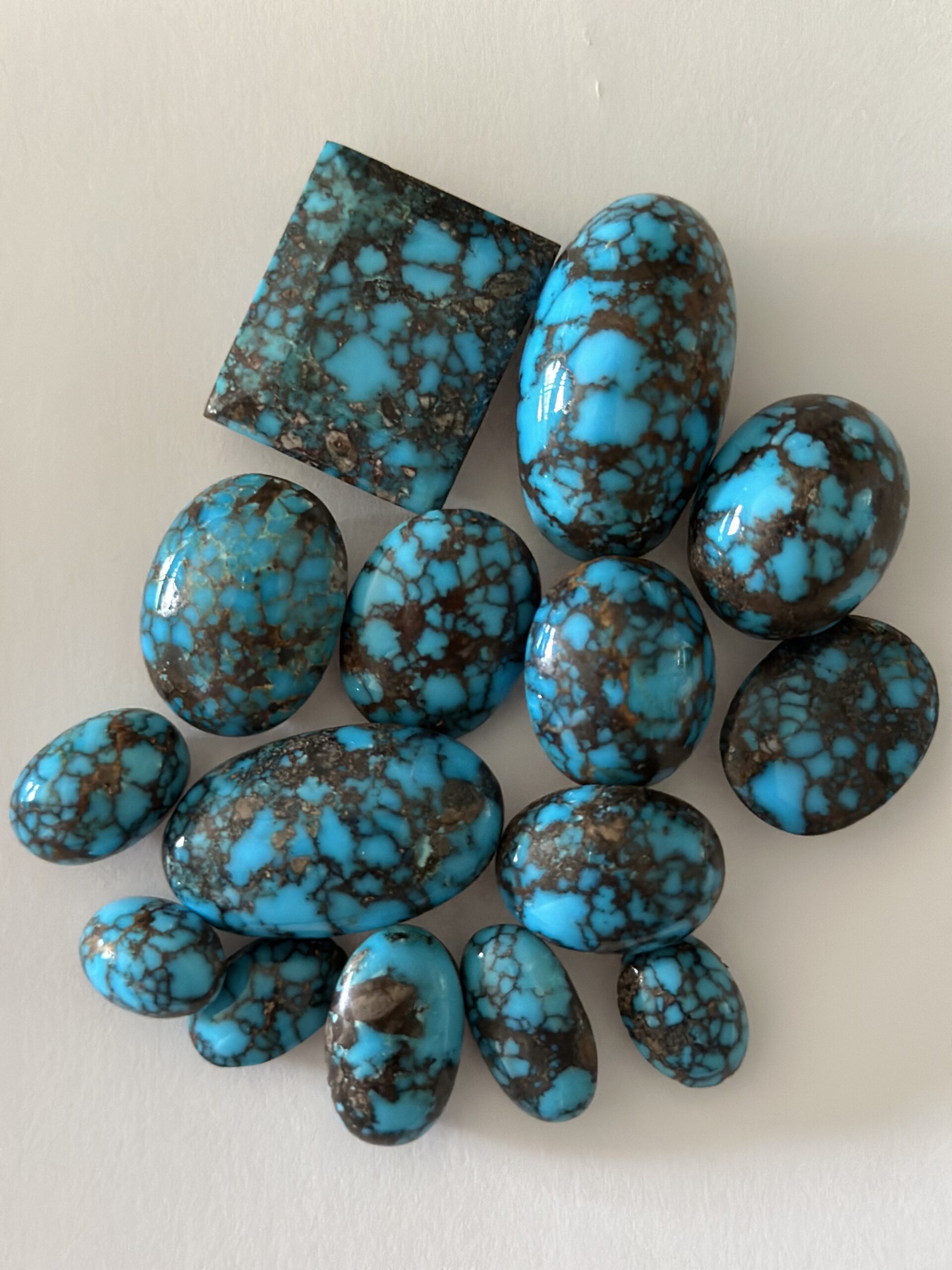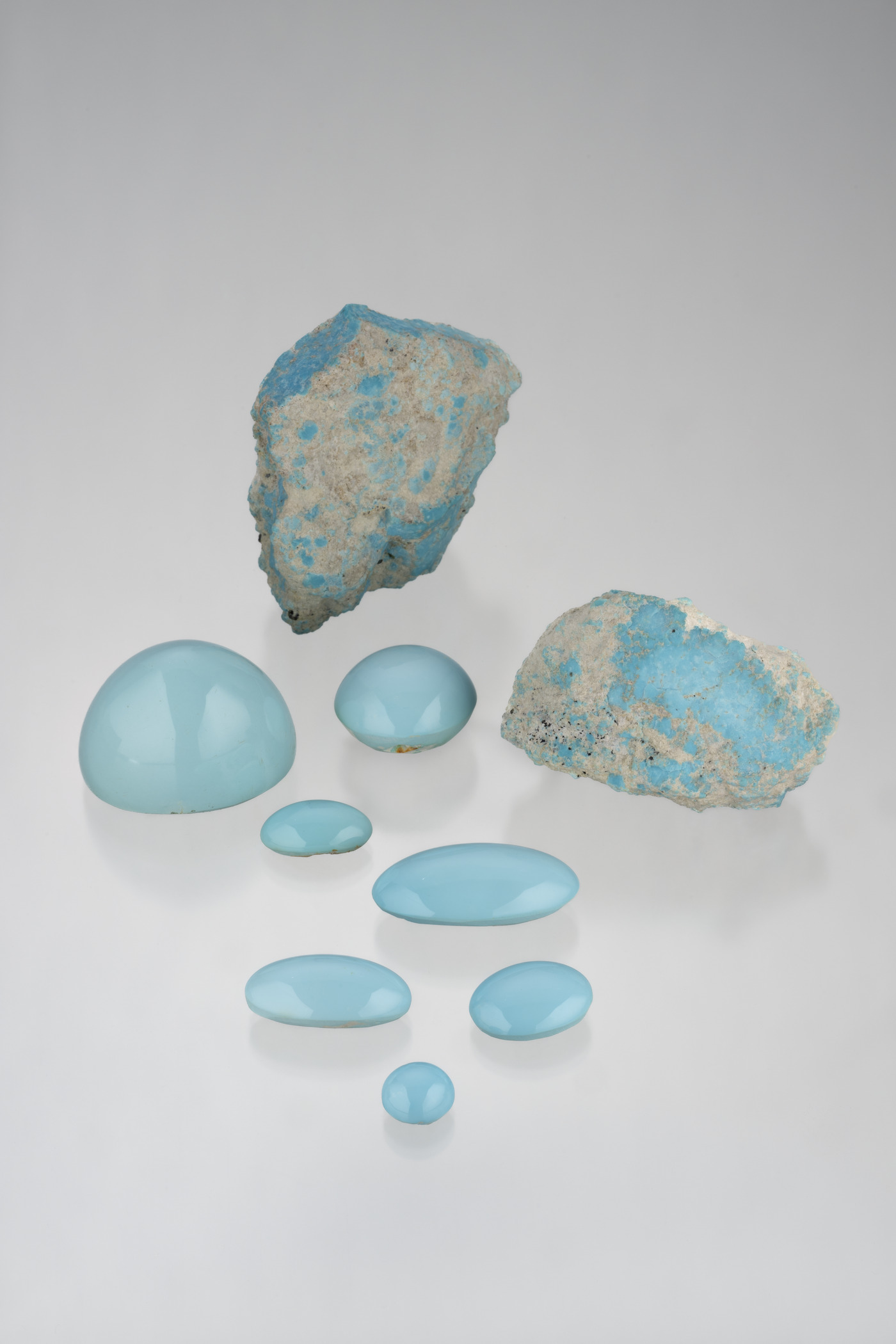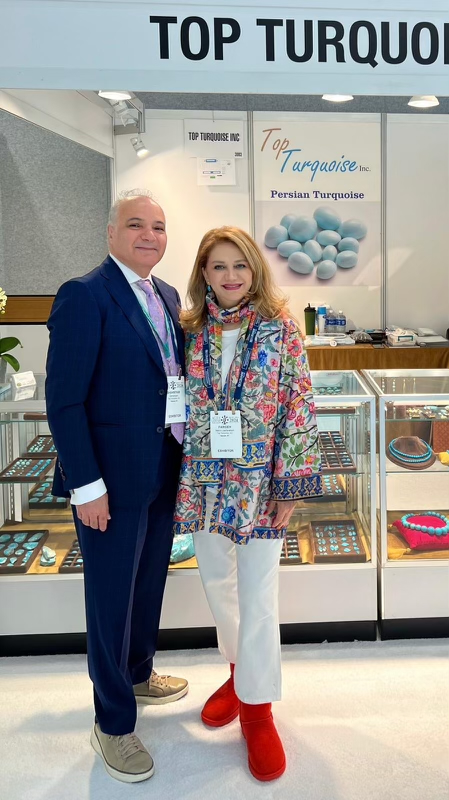By Shahriyar Zamansani, TopTurquoise, Inc.
Hello, fellow AGTA members! I am the founder of TopTurquoise, Inc., and I am delighted to talk to you about sourcing Persian-origin Turquoise, a gemstone about which our family is passionate.
My wife Farideh Mihan and I have been supplying the trade with (Iranian) Persian Turquoise for more than 20 years. The gems are from the city of Firouzeh, Khorasan, Iran, a city with a name that translates from Farsi to mean Turquoise. TopTurquoise, Inc., exhibits at trade shows like AGTA GemFair Tucson, where you can see a wide variety of our loose Turquoise available for sale. We also have some inventory in finished jewelry designs featuring Turquoise that are designed by Farideh.

Persian Turquoise rough
Iranian Turquoise has historically been mined from three deposits—Neyshabur, Kuh Zar,
and the Meiduk Mines in Iran. Neyshabur is a mine that exists solely for Turquoise production, while Kuh Zar is a gold and copper deposit, and Meiduk is a copper mine. Turquoise is often uncovered in or around copper deposits because it is a hydrated copper and aluminum phosphate found in desert-like conditions.
According to the 2021 GIA article “Persian Turquoise: The Ancient Treasure of Neyshabur,” 19 to 40 tons of Turquoise are produced annually in Neyshabur. But because Iran is a country with sometimes unstable government conditions, talk periodically circulates about mine closures. However, our company is part of a Turquoise community and union, so we get quarterly supplies and shares from the mine. This is why I travel abroad three to four times a year to purchase the rough. We generally cut our own, and occasionally I will purchase some already cut stones from the miners that I think are suitable for the international market.

“Spider Web” Persian Turquoise cut into cabochons
As for colors, Persian Turquoise varies from robin’s egg blue to deep Turquoise that is both clear and in matrix, à la spider web Turquoise, which is the most valuable. We sell through all colors of the material to both independent artisans and brands.

A selection of Persian Turquoise Courtesy of Top Turquoise. Photo: Robert Weldon/GIA
On average, 20% of the available Persian Turquoise is high grade. This means the gems are either light and dark blue with beautiful webbing (spider web), called Shajari in Farsi and/or a beautiful blue with a few lines (matrix) of red or black or white running through it, called Ajami in Farsi. High-grade Persian Turquoise is generally very clean, from soft blue to dark blue or flawless.

Shahriyar and Farideh Zamansani, owners of TopTurquoise, Inc.
Do you have more questions about Persian Turquoise? Reach me at [email protected].
To learn more about TopTurquoise, Inc., read “Persian Blues” in Volume I 2023 Prism.
This is proprietary content for AGTA and may not be reproduced.
